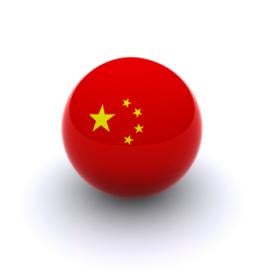In recent years, the emphasis on food nutrition has been high on China’s agenda. In 2016, the Chinese State Council announced the “Healthy China 2030”[i] plan, followed in 2019 by the National Health Commission (NHC)’s specific guideline, “Healthy China Operation 2019-2030.”[ii] Improving the overall national nutrition and health of China is one of the core steps to reach the goal of the Healthy China plan by 2030. A range of concrete measures have been formulated for implementation, including:
-
Reducing the use of salt, fat, and sugar
-
Increasing the awareness and understanding of labeling nutrition information
-
Replacing sugar with natural sweetening substances and sweeteners
-
Promoting the use of “low sugar” and “sugar free” claims
-
Bearing the Front-of-Panel (FOP) nutrition labeling
-
Expediting the amendment of the nutrition labeling standard for prepackaged food GB28050[iii]
-
Implementing voluntary nutrition labeling for catering food[iv]
These measures are likely to be embodied in the upcoming regulatory changes regarding nutrition. For instance, during Beijing’s Two-Sessions 2020 in May, the head of the China National Center for Food Safety Risk Assessment (CFSA) proposed to the National People’s Congress to introduce a new nutrition legislation.[v]
Nutrition fortification also made its way into the United States -- China Phase One Economic and Trade Agreement[vi] (“the Agreement”), which entered into force on February 14, 2020. Specifically, Article 2(f), Annex 2, Chapter 3 of the Agreement, titled “Fortified Milk”, states that China will continuously allow fortified milk produced in the United States to be imported into China, subject to the National Food Safety Standard, Modified Milk (GB25191), and notify the draft standard to the WTO should China undertake development of a new standard for fortified milk (currently, there is no stand-alone standard in China that is specific to “fortified milk”). This further signals the policy support from Beijing on import of nutritionally fortified food into China, in line with the Healthy China objective.
Taking a closer look at how China regulates substances used for nutrition fortification, one must carefully consider GB14880[vii],the national food safety standard that lists the permissible nutritional substances along with the specific use levels and food categories in which these substances may be added for the purpose of nutritional fortification. If one wishes to fortify a food by using a nutritional substance that is not included in GB14880, a petition must first be filed with the National Health Commission to obtain approval.
By way of example, under GB14880-2012, substances such as Vitamin A, Vitamin D, Vitamin E, Folic acid, Iron, Calcium, Zinc, and Lactoferrin are authorized for use in Modified Milk for fortification. Thus, if traders are interested in exporting fortified milk to China, they must confirm whether the nutritional substances are permissible for fortification in milk under GB14880, as well as other applicable regulatory requirements, such as the finished product standard, Modified Milk (GB25191). This approach applies to other food categories as well (e.g., milk powder, biscuits, cereal) whenever there is food nutrition fortification.
Notably, NHC commenced its amendment on the nutrition fortification standard GB 14880 since 2016 and on the nutrition labeling standard GB28050 since 2017; however, progress has been slow due to some controversial issues, e.g., criteria of foods eligible for nutrition fortification and expansion of additional nutrients subject to mandatory labeling.
The industry should closely monitor the developments of these nutrition-related regulatory moves and make the best use of the government’s “nutrition” regulatory and policy landscape for business success.
[i] http://www.gov.cn/zhengce/2016-10/25/content_5124174.htm
[ii] http://www.nhc.gov.cn/guihuaxxs/s3585u/201907/e9275fb95d5b4295be8308415d4cd1b2.shtml
[iii] https://sppt.cfsa.net.cn:8086/staticPages/C89C7E02-42FF-4D74-BE85-EB4E764EE210.html
[iv] NHC on June 24, 2020 published the draft guidance document detailing the nutrition labeling requirements for catering food sold by restaurants, canteens etc. See more at http://www.nhc.gov.cn/sps/s7887k/202006/37993e19a60a4f8594d38508945bd8b4.shtml
[v] https://www.cfsa.net.cn/Article/News.aspx?id=2E2FA96E0034D85D852DAE5C439B0B2F4D1EB9EFF6D9ADBB
[vi] http://www.gov.cn/xinwen/2020-01/16/content_5469650.htm
[vii] https://sppt.cfsa.net.cn:8086/staticPages/002D3B53-DE13-42C1-B099-C57EC501138A.html



 i
i


